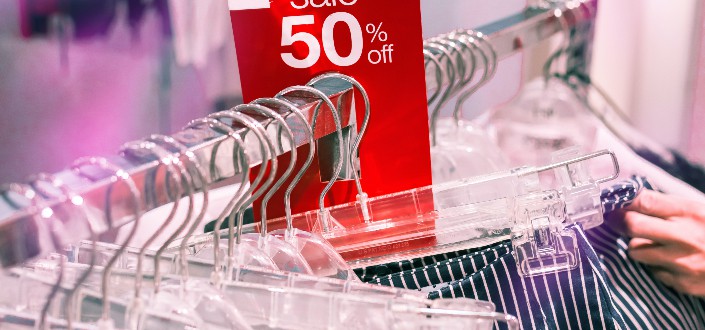In this post, we’ll answer the intimidating question, “What is cross-selling?”
I’ve written all about marketing your product to your customer. Cross-selling is one important sales technique that you should learn. Along with upselling, this sales strategy is what you need to sell more and succeed in business.
Let’s dive in.
Contents
What is Cross-Selling?

Pexels / Jopwell
The cross-selling technique is when a company sells a related product or complementary product to the customer. With this, you market an extra product to your existing customer hoping that they buy the additional item and add revenue to the business. Cross-selling strategies are one of the most effective marketing strategies businesses can apply.
Cross-selling becomes more effective if the additional product recommendations you give are like a complimentary item. It should be related and work alongside the initial product the current customer is buying.
How Does Cross-Selling Work?

Pexels / Rodnae Productions
Cross-selling works by offering product suggestions that go well with the first product to your customer. Usually, the additional purchase is a product that adds to customers’ needs and improves customer experience.
Depending on whether the sales tactic is done in-store or online, the method will vary.
In-store

Unsplash / Cam Morin
In a physical store, cross-selling is done by showing a related product that would complement the product that the customer is already about to purchase. Usually, the sales rep will explain how the cross-sell offer works alongside the initial product.
Online

Unsplash / Tran Mau Tri Tam
For online businesses, what happens is that the cross-selling offer appears as a strategic part of the check-out process of the repeat or new customer. Sometimes, complementary products are shown on the product page. Sometimes, they appear just before the customer is about to pay for the item. A cross-selling campaign usually takes more time when done online.
Cross-Sell Versus Up-Sell: 2 Differences

Pexels / Ketut Subiyanto
Many people, especially those just starting with their business, are confused between cross-selling and upselling. Although both strategies add value to a purchase, they do this in completely different ways from each other.
Here are 2 main differences between upselling and cross-selling:
#1. Additional vs. Upgrade

Unsplash / Christian Koepke
Cross-selling is all about giving or offering an additional product to the initial product that the customer plans to buy. Those who cross-sell want to add value to their customer’s orders in the hopes that customer satisfaction will be higher.
On the other hand, upselling is a tactic wherein you encourage the customer to upgrade the order they’re planning on purchasing. In short, you sell a better product to them, so improve their customer experience and your customer relationship.
#2. When To Offer

Unsplash / Clay Banks
A big difference between cross-selling and upselling is when it’s best to offer.
A cross-sell opportunity is usually most evident when your customer is about to pay for the initial product. Cross-selling is best done when your customer is about to hand over the money to you.
On the other hand, it’s best to offer it when your client has been a continuously satisfied customer for a while when upselling. Upselling can also be done while your customer is still contemplating the item they want to buy.
5 Tips To Create An Effective Cross-Selling Strategy

Pexels / Gustavo Fring
Your cross-selling effort should not be for anything. There are easy-to-follow tips to ensure that your cross-selling tactic will lead to repeat purchases and higher customer satisfaction. Of course, a successful cross-sell will lead to another sale.
Here are 5 effective cross-selling tips:
1. Use behavioral segmentation

Pexels / Said
Using behavioral segmentation allows you to give cross-selling offers specific to the kind of customer you have. If you group your customers into particular categories, it’s easier to understand what they need and want. This means it’s easier for you to get their attention with your offer.
2. Map out your customer journey

Pexels / Sam Lion
Customer journeys help you figure out when the right time is to offer your cross-selling product. If you don’t map out your customer journey, you won’t know the right time. This can make your offer flop.
3. Offer supplemental products

Pexels / Alesia Kozik
Your cross-selling product should be supplemental rather than a must-have. It will only annoy your customers if they can’t use the initial product without buying other products.
4. Take the social approach

Pexels / Rafae Guimarães
Customers are more likely to get additional products if they see that others are doing it. If you use this approach, cross-selling becomes more successful.
5. Order thresholds

Pexels / Artem Beliaikin
Order thresholds aren’t the traditional way of cross-selling, but they still are effective. With this, you tell your customers that they’ll be able to get more discounts by purchasing a certain amount more.
4 Cross-Selling Benefits For Your Business

Pexels / Sam Lion
Cross-selling benefits your business because it helps you in terms of sales and customer loyalty. The great thing about cross-selling is that it considers your customer too.
Here are the 4 benefits of taking advantage of a cross-selling opportunity:
1. Increase average order value

Pexels / Gustavo Fring
It’s not hard to see that if your cross-selling strategy is successful, you increase the number of products sold. Your orders become more valuable, and your customers get a better experience.
2. Increases customer lifetime value

Pexels / Borko Manigoda
If customers can get a better experience and orders from cross-selling, they will keep coming back, feeling like they have more value than before.
3. Helps differentiate your brand

Unsplash / Clark Street Mercantile
If you can give a unique experience to your customers, they’ll know your brand as one who cares about their experience. It will uplift your brand.
4. Enhances customer experience

Pexels / Mikhail Nilov
Because cross-selling offers supplementary products that improve the customer experience, there will be better customer retention and loyalty. When customers get a better experience, they will keep coming back.
Frequently Asked Questions

Pexels / Rodnae Productions
The cross-selling strategy is confusing, so it’s very understandable if you still have any questions about it. Don’t worry; we have all the answers you need.
Why is cross-selling important?
It’s important because it helps businesses be able to sell more while giving their customers a better overall experience with their products.
How do you calculate cross-sell?
Calculating cross-sell depends on the metric that you want to get. You can get metrics such as attach rate, conversion rates, and sales effort spent, and they all have different computations.
How can you increase your cross-selling effectiveness?
You can increase it by considering your customers. Offer deals that will give more value to their daily lives. In addition to that, use different marketing efforts to bring your cross-selling efforts out there.
What are the Dos and Don’ts of cross-selling?
Always wait until your customers have added the product to their shopping cart before offering anything. Cross-sell honestly, not just to get rid of items you want to remove from your inventory. Always be transparent with the customers if the cross-sell item is discounted.
More Interesting Article To Explore
It’s always fun to learn more about business and products to help you expand yours. We have more articles for you to explore.
- Succeed with this internet business formula. It’s all you need to follow!
- Learn about the services on-demand here. You might get an idea of what to offer.
- If you want your website to succeed, knowing all the best WordPress themes and which ones suit your business is key.
- Webflow vs. WordPress. Learn more about their difference, so you know which one is best for your business.
Conclusion
Now that you know what is cross-selling, we hope that you use this knowledge to increase your customer satisfaction and brand loyalty. Knowing about this strategy can help you improve your sales and business in the long run.






